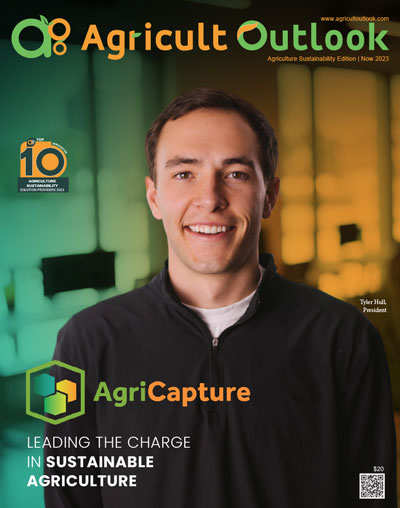Regenerative Agriculture has emerged as a key paradigm to improve the environmental sustainability of farming. Across agricultural value chains and commodities, private and public sector organizations have started engaging with the concept. Further, whilst initially being promoted as a solution to predominantly reduce and sequester greenhouse gas emissions, the scope of Regenerative Agriculture outcomes has expanded to include other environmental impact domains, such as water, biodiversity, and soils. This in response to the fact that current production systems risk exceeding planetary boundaries across all these dimensions. Yet, and despite numerous public commitments to Regenerative Agriculture, a major shift towards Regenerative Farming has yet to happen. With this article, and sharing my own views and opinion, I try to explore some of the conceptual factors that hinder the adoption of Regenerative Agriculture at scale. I then describe how the Sustainable Agriculture Initiative Platform (SAI Platform), a global member organization of the Food and Drinks sector, aims to tackle some of them. I tried to structure these factors into major three themes but would neither claim to be exhaustive, nor mutually exclusive.
The need to be farmer centric
Most approaches to Regenerative Agriculture aspire to be farmer centric. But, given the diversity of farmers worldwide, how can this be achieved? And, given that most approaches to Regenerative Agriculture come from different players in agricultural value chains, are farmers needs and interests always the main priority in their design? A few examples may urge us to think twice. Firstly, a common narrative to Regenerative Agriculture is the “failure of conventional agriculture”. To me, this first and foremost raises the question on what “conventional agriculture” is given the vast diversity of farming? Despite of working in the sector for 15+ years, have yet to find a common definition for it.
Secondly, it also raises the question about the main purpose of farming. Historically, and probably still today, it is the production of sufficient amounts of affordable food to feed a still growing global population. In recent decades, farming has been incredibly successful in serving this purpose: It has increased productivity by a factor of 3 globally, whilst only marginally expanding the land we use for farming (and despite of losing some of the most productive farmland to expanding human infrastructure, such as settlements and roads). Compare this with improvements resource use efficiency in other industries, such as cars or power stations, and you might be surprised about the performance of farming! Of course, as we now better understand the environmental implications of intense farming, we can – and should – better tackle them and make sure that we stay within planetary boundaries whilst still producing sufficient food. However, seeing farming as a failure seems harsh and unjustified to me.
As mentioned before, farming is incredibly diverse. Farmers have different needs and different motivations for engaging in Regenerative Agriculture: For instance, some farmers (particularly in the global North) have access to formal markets that allow for value chain incentives (i.e. in the form of certification and premium prices) or subsidies to encourage the adoption of Regenerative Agriculture. Others (particularly in the global South) farm without access to subsidies and sell their produce to informal markets that do not incentivize, nor allow to trace, sustainably produced crops or livestock. They are therefore likely to only adopt regenerative practices if they lead to increased production, resilience, or decreased production costs. Different contexts therefore require different engagement strategies and value propositions.
The need for a unified definition of what Regenerative Agriculture is
What is Regenerative Agriculture? How can we determine on whether a farm can claim to be “regenerative”? There are no simple answers to this question. Multiple definitions and frameworks exist, often conflicting around the long-term ideological disconnect between intensive and extensive farming. This leads to confusion on which guidelines to follow, if you are a farmer, or to endorse, if you are a consumer. In turn, this leads to market fragmentation with many markets with different requirements. This which limits the appeal for farmers to engage with the concept. A unified, agreed definition would help overcome this and make it more appealing and less risky for farmers to engage in a transition.
Data and how the ambition for perfection may undermine progress
A common denominator of Regenerative Agriculture is the ambition to be explicit on outcomes (i.e. the improvement that can be achieved in terms of environmental impact), rather than being imposing on practices or ideological principles. Consequently, there are numerous commitments on improving performance on such outcomes, oftentimes with quantitative expectations of improvement (i.e the reduction of GHG emissions by X% through Regenerative Agriculture, or the improvement of of soil biodiversity). Such commitments and the desire to explicitly measure outcomes may undermine progress towards Regenerative Agriculture. Measuring impact can be costly and tedious. It therefore risks diverting resources away from “delivering the transition” towards “measuring the delivery”. Already now, in many cases, this leads to big proportions of corporate Regenerative Agriculture budgets being spent on monitoring, reporting, and verification (MRV), rather than on Regenerative Agriculture itself. With increasingly strict protocols for reporting on environmental outcomes, such as greenhouse gas emission reduction, we risk further increasing the cost of MRV in the future. I feel that it is therefore paradigm to better understand and agree “what is good enough” for quantifying and reporting progress, rather than striving for perfection in terms of data collection and reporting.
As mentioned at the beginning of this text, what is shown here is a non-exhaustive list of challenges that need to be tackled if we wanted to make Regenerative Agriculture a global reality. There are of course other challenges that include access to finance, knowledge, infrastructure, and technology. Yet it seems paradigm to clarify some of the more conceptual disconnects before calling for investment and commitment, particularly from farmers. At SAI Platform, we aim to do so with a focus on the food and beverage industry. We create an aligned vision for what Regenerative Agriculture is for the industry and build a framework that allows to claim and report Regenerative Agriculture status along the value chain. This, with a particular focus on being inclusive to diverse farms across the world by focusing on an approach that specifically spells out that farming needs to be productive and on robust, yet efficiently quantifiable outcomes and metrics that serve as meaningful indicators for water, soils, biodiversity, and climate. More information on our work can be found here: https://saiplatform.org/regenerative-agriculture-programme/. We are eager to engage with diverse stakeholders, especially farmer communities and research, as we further build and roll out our approach to Regenerative Agriculture. Please do reach out to us to engage!




